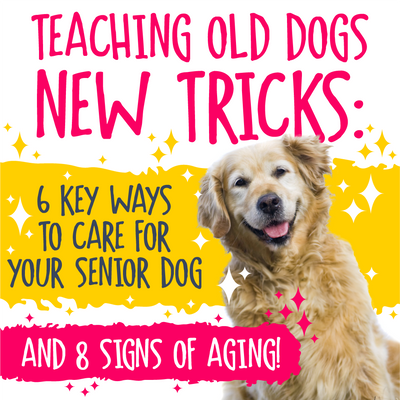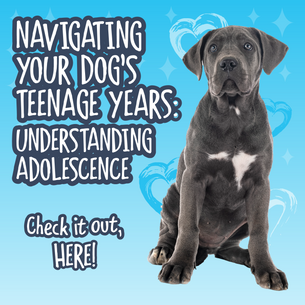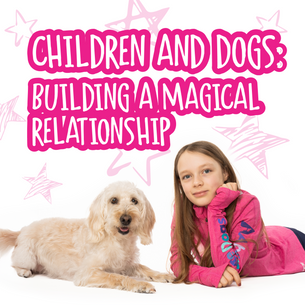Our senior dogs have lived an amazing life with us. They have given us memories we will hold dear to us long after they are gone. For some, they will be the dogs that define all other dogs that we have after them… For others, they are the dog that taught us lessons that we didn’t necessarily sign up for but are grateful for, nonetheless.
They are the greying version of a dog that has carried us through life, a dog who has witnessed the many events that we’ve undergone as individuals, the celebrations and successes, the failures and the heartbreak.
They have carried us through our most trying times and it can only be fair, and kind, to familiarise ourselves with the ageing process so that we can support them in their old age and provide them with special, unique care meant to ease them into this part of their life.
Watching our beloved canine companion as they grow old can be difficult, and yet there really is important knowledge that we can possess that will allow us to feel more confident in the decisions we make about their care.
Let's delve into the 8 common signs of ageing and discover 6 essential ways to care for our senior dogs!
8 Common Signs That Your Dog Is Getting Older
As your dog matures, you might often find yourself wondering:
- Is my dog getting old?
- Is my dog sad or depressed?
- How can I train my old dog?
- Why is my dog’s behaviour changing?
As a dog ages, their body and brain go through changes, so understanding those changes and knowing how best to support your dog through those changes is essential in order to set them up for success and give them the care they deserve through their twilight years.
While there are variations depending on breed, size and genetic makeup, a dog is typically considered a senior around 7-8 years old. Larger dogs may be considered a senior as early as 6 years old, while smaller dogs may be considered a senior around 9 or 10 years old.
Many changes can occur in our senior dogs. Let’s explore 8 of the most common ones.
#1: CHANGE IN RESPONSES AS YOUR DOG GETS OLDER
Your dog may not have the responses you’ve associated with them to auditory stimuli, for example. As dogs age, their reflexes and responses may slow down. Just as an elderly relative might be a bit slower to respond and a little hard of hearing, it's not unusual to see similar signs of ageing in your dog.
#2: LOSS OF JOY AS YOUR SENIOR DOG AGES
It isn’t abnormal for senior dogs to demonstrate less joy. For us, their prior youthful exuberance and enthusiasm was an indicator of happiness. It is not uncommon that a senior dog is less joyful in their behaviour, as observed by their owner.
It's essential to differentiate between signs of ageing and signs of sadness in your senior dog. Some behaviours, like decreased joy or disinterest in activities, might be interpreted as signs of sadness.
However, these are common signs of ageing in dogs and not necessarily indicators of sadness. It's important to cherish the memories of your dog's youthful exuberance while also finding joy in the ways they express happiness and contentment.
If you suspect your dog is genuinely feeling down, look for other signs like appetite changes, lethargy, and avoiding interactions. If you are concerned about your dog's emotional wellbeing, consult a vet or an animal behaviourist for guidance.
#3: OLDER DOGS MAY SHOW INCREASED VOCALISING
Whether it’s from neurological changes, or it’s from other changes taking place, your dog may experience an increase in vocalising as a result of getting older.
Sometimes it can be the nature of the relationship between the owner and their dog, as well as those cognitive changes, that can reinforce the increase in
vocalisation.
#4: AN OLD DOG’S TOILETING HABITS MAY CHANGE
Incontinence is not abnormal for a senior dog. This can be a symptom to be aware of and alongside the care of your veterinarian, you can provide your dog with doggie diapers.
#5: SENIOR DOGS MAY BEGIN TO SHOW SEPARATION STRUGGLES
With cognitive decline, confusion and disorientation, another symptom
of your dog’s ageing process can be increased separation struggles, even if
your dog did not have separation anxiety-related behaviours when they
were younger. If you worked hard to overcome these struggles when your dog was younger, they may reappear as your dog ages.
#6: AN OLDER DOG MAY BECOME DISORIENTATED MORE EASILY
A senior dog may also appear to be disoriented more often. This is due to cognitive decline. Tunnels, i.e. neural pathways, are experiencing degeneration. Providing them with the proper supplements like Flexi-K9 and Calm-K9 Senior Boost, and depending on their overall health, maintaining a healthy, active lifestyle can help immensely.
#7: THERE MIGHT BE A LOSS OF LEARNING AS YOUR SENIOR DOG AGES
Behaviours your dog may have known very well throughout their life may suddenly not exist. Your dog may be slower to respond, or less coordinated in their responses. These are all symptoms of ageing. Be patient with your senior dog and support them the best you can.
#8: CHANGE IN SLEEP-WAKE CYCLES FOR SENIOR DOGS
Due to a change in cognitive processes, your senior dog may also develop changes in their sleep-wake cycles. They will sleep more often. Making sure their day is also adventure-filled, full of passive calming activities and opportunities for physical exercise, can be beneficial to maintaining a reasonable schedule.
You might also find that your dog wakes at odd times. Maybe they are up and down during the night, or begin to wake earlier in the mornings. Take time to consider what may be contributing to their wakefulness. Is it discomfort? Is it the structure of activity in the household? Are they getting quality rest?
As they age gracefully, it's crucial to understand these changes our senior dogs experience and how to support them during the golden years of their lives. From altered behaviours to physical transformations, recognizing the signs of ageing in senior dogs equips us to offer the best possible care for our ageing four-legged friends.
6 KEY WAYS TO SUPPORT YOUR SENIOR DOG THROUGH THE AGING PROCESS
Navigating your dog’s golden years can be both a rewarding and challenging journey. As our beloved companions age, understanding how to best support them through this phase of life becomes essential.
So now it’s time to explore invaluable strategies and solutions that will help you offer your ageing canine companion the necessary care and support they deserve. These tips and techniques are tailored to ease their transition into their senior years, ensuring they continue to thrive and enjoy a fulfilling life by your side.
#1: GROW YOUR OLDER DOG’S TOLERANCE OF FRUSTRATION
The patience your dog once may have had might be lower due to the ageing process. Just like in humans, it isn’t abnormal in the senior years for some grumpiness to follow suit. The body is changing and with that change comes discomfort, and an increase in aches and pains in the body and in the joints.
As a result, your senior dog may not be nearly as patient or tolerant of the frustration that they are feeling. Playing games that increase their tolerance of frustration, just like you would if they were a young dog struggling with the same concept, can help boost the concepts that are influenced by the ageing process.
Play Games with Your Senior Dog as They Age!
Games are a great way to keep your senior dog (and their brain) active and grow their Tolerance of Frustration.
New games, or old favourites played in new ways and locations are a great way to provide your ageing dog with new things to learn and keep their brain learning. Yep! You CAN teach an old dog new tricks!
Games that focus on enriching your dog mentally and growing their mental flexibility are also perfect for senior dogs.
Games and Strategies for Your Senior Dog as They Age:
- Ditch the Routine
- Ditch the Bowl
- Enrichment activities and food puzzles
- A behaviour and wellness supplement like Calm-K9 Senior Boost
Our AbsoluteDogs Ditch the Routine eBook, as well as our Ditch the Bowl and Ditch the Bowl RAW eBooks are FREE and are a great way for you to discover new ways to enrich your senior dog’s life using food and games!
#2: SPOTLIGHT ON DITCHING THE ROUTINE FOR YOUR OLDER DOG!
Life happens and routines that get established throughout life can change at a moment’s notice. If we don't set our dogs up for success and prepare them to be flexible for those moments, we can sometimes inadvertently, without realising that it is happening, cause stress to our dogs by allowing predictability to run our choices and their lives.
Ditch the Routine helps support the flexibility that your senior dog needs to navigate the ageing process. Being more flexible will be key as life changes around them and the reality is, it does change, and we need to be just as flexible in what we do for them.
What are some ways you can ditch your senior dog’s routine?
- Change when walks happen and if they have their walks on a schedule
- Vary the path you take on those walks and the location of where you go on your wonderful adventures together
- Vary what you provide them for their daily rations and diversify the choices your senior dog is provided – eating doesn’t have to be boring!
- Sleeping and waking don’t always have to happen at the same time or in the same place - all while making sure they have quality sleep when they sleep.
- Bowls aren’t that interesting so provide your senior dog with other options for how they interact with their food including scatter feeding, or animate or enhance the Reward Experience to grow joy and happiness and even add in some low-key fitness.
#3: RECREATE THE SOCIALISATION PERIOD WITH YOUR SENIOR DOG
Due to a possible deterioration in eyesight, novelty can then appear to be everywhere. After all, blurry objects that can’t be identified can be quite scary!
As a result of their newfound novelty awareness due to those changes, senior dogs may be more pessimistic. They may be fearful or reactive to things they never had issues with earlier in life. Patience is key when navigating these changes with your senior dog.
They have no idea what’s happening, but as an owner, it is good to know that these changes may happen and that they are a normal part of the ageing process so that it isn’t quite as startling when it takes place.
Of course, when any changes occur, we highly recommend having consistent communication with your veterinarian to best support your senior dog through these changes. Try playing games that will help grow your dog’s optimism and confidence when novelty appears.
Optimism Games to Play with Your Senior Dog as They Age!
- Novelty Party and Cardboard Chaos (on a stable, non-slip surface)
- Balance Path (senior appropriate, low, non-slip, nothing too wobbly)
- Scatter-feeding
You can find these games - and so many more - in our FREE AbsoluteDogs Optimism Rocks eBook!
#4: BE AWARE YOUR OLD DOG MIGHT DEVELOP HEARING DIFFICULTIES
But don’t you worry, unless your senior dog truly does lose their ability to hear, they will more than likely still come running whilst you’re fighting with that plastic wrapper!
With a reduction in hearing abilities, you may notice that your older dog also becomes noticeably less responsive to the world around them or that they may startle when approached if they don’t see, or hear you coming. This could also increase pessimism, so continuing to build their optimism and confidence is vital as your dog gets older.
You may notice a decrease in their ability to take in new information as a result of all of the changes taking place in their body and mind. Their flexibility may also be impacted as a result, and their willingness to respond to change may be affected.
Doesn’t this sound like humans? There are parallels and it’s easier to relate to when you can imagine the human version of what your dog is going through.
Getting older means your dog is wiser and has enjoyed an amazing life experience and it also means that change is happening, that your dog’s body and mind are becoming older, as well, and knowing what happens in the body, and in the mind, can help you to be your senior dog’s best caregiver.
#5: HOW TO MANAGE PAIN FOR YOUR OLD DOG
Fortunately, as the world’s medicine improves, both in humans and in dogs, we are given so many options to support the ageing process in our dogs through holistic approaches that have proven to be successful, as well as other treatments that help to reduce the physical and mental progression of ageing.
For example, in holistic approaches there are supplements that a senior dog can take to help their joints feel more supple, to improve their movement and alleviate arthritic discomfort and to reduce pain to help them live a happier, healthier life in their senior years.
Flexi-K9 from A-OK9 is a mobility support supplement and an excellent way to support your senior dog’s joints and overall body. There are also great therapeutic modalities that can help with your senior dog, including laser treatment, acupuncture, and ultrasound therapies.
It is important to know that some of the ageing process changes are painless and yet have the appearance of pain (of course to be determined by your veterinarian!). These include one of the more common changes where a dog’s breathing becomes heavier as a result of the muscles in their throat weakening due to the ageing process. It sounds painful and yet isn’t always!
Neuronal damage/degradation is something that happens within the brain and also within the body. Often, you’ll see that your senior dog may have become clumsier in their body, that they have lower muscle mass and less neuronal stimulation of their muscle bellies, which in turn impacts pain.
The longest nerves in the body degenerate first - nerves in the hind limb that may cause a wobbly back end as well as other nerves that weaken, even one that may cause heavier panting. Often these symptoms are considered painful.
When the nerves start to degenerate, they have a noticeable impact. Vitamin B can help to slow the progression of degeneration. That’s important to know and finding a supplement with Vitamin B, such as Prime-K9 from A-OK9 is essential for your senior dog. B Vitamins are involved in maintaining neuronal health and slowing degradation as well as supporting neurogenesis and the creation of new neurons.
A form of pain management can also be a consistent, steady plane of exercise and making sure you include this into your dog’s daily schedule.
#6: EXERCISE IS VITAL FOR KEEPING SENIOR DOGS FIT AND HEALTHY!
Did you know that exercise is absolutely vital for keeping your ageing senior dog moving for as long as possible and to help keep them as flexible and as healthy as possible as they get older?
Yep, it’s true! In fact, we believe it’s essential for ALL pet parents to understand the value of fitness. DON’T rest those aching joints!
When working on fitness for your senior dog - a key part of their overall wellness - make sure that the exercises are low-impact and appropriate for your individual dog.
Warming up and cooling down your senior will also be very important. Do not rush into exercise. Even starting with a nice full-body massage where your focus is moving the skin over the body and activating muscles through focused massage can be incredibly beneficial.
Here are our favourite TOP 3 fitness exercises for senior and ageing dogs:
SQUARE STAND DURATION
A square stand where the focus is your dog’s feet placement and their ability to maintain the position sounds like a simple exercise but can be very hard on the body for long lengths of time - in fact, try standing still without shifting your body weight from side to side… How long can you do it?
It’s important to keep sessions short, reward often and release your dog from position regularly and build up duration over time, working with the dog in front of you to ensure they are not in any discomfort.
TWO FEET UP STAND WITH DURATION
A duration Stand combined with Two Feet Up focuses on different muscle groups than the Square Stand with Duration. Making sure you are tackling different muscle groups will be key to maintaining your senior dog’s fitness.
Reward generously and keep motions slow, including the release off the object you’re using. It doesn’t have to be a high object (you can use a book, yoga block, a firm cushion or anything that is stable and non-slip). Be sure to lure your dog off for the release so that they don’t twist and turn quickly off of the platform.
PAINT THE TOWN RED
Simply hold some food in your hand, pop it in front of your dog’s nose and gently guide them in wide circles, figure 8s and sweeping arcs as if you are painting the floor with your hand.
You want to play Paint the Town Red with your dog’s head low to promote extension and ease them via luring to really encourage stretching in motion. You can adjust your luring speed (being sure to adjust to the dog in front of you - don’t go too fast if they cannot keep up).
Not only does this game provide a level of fitness and flexibility for your senior dog, it also improves their reward experience and keeps them engaged.
BE YOUR OLD DOG’S BEST ADVOCATE
Understanding the signs of ageing in our senior dogs is the first step in providing them with the care they deserve. By recognising these changes and implementing strategies that address their evolving needs, we ensure our ageing companions live their golden years with comfort, support, and joy. After all, teaching old dogs new tricks isn’t just about learning; it's about adapting our care to their changing world.
This blog aims to guide dog owners in recognising signs of ageing and providing appropriate care for their senior companions. It's important to note that every dog is unique, and consulting with a veterinarian for tailored advice is always recommended.
If you want to dive into even more tips, tricks, strategies, games and solutions for senior dogs, come on over and join us in the AbsoluteDogs Games Club!




